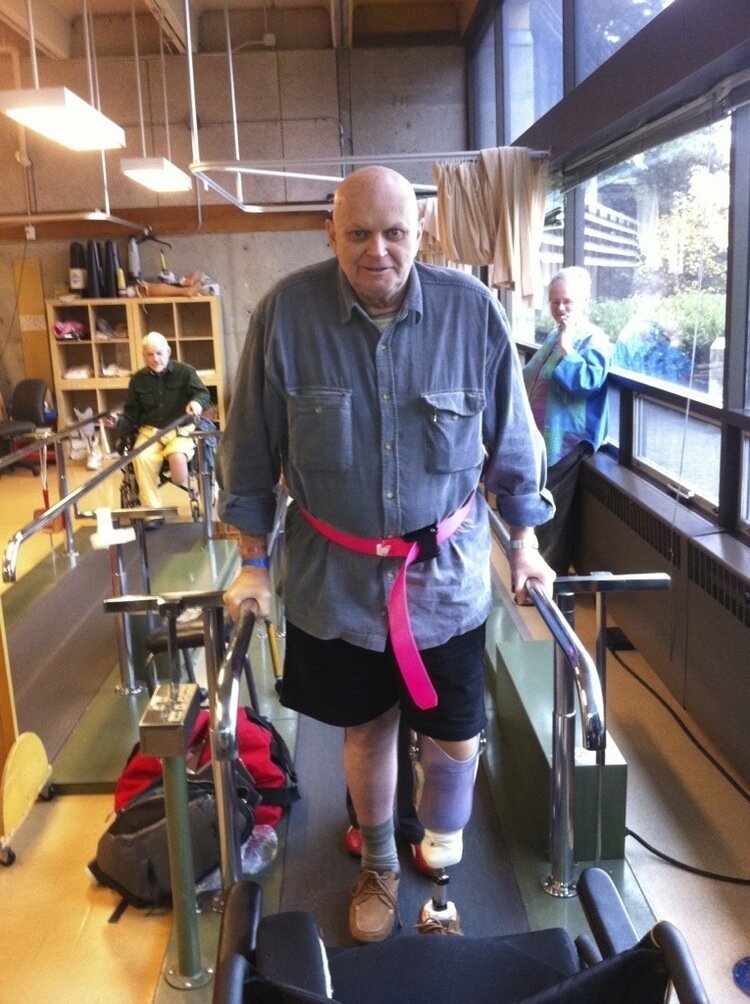How do Older Adults Use their Prostheses After Rehabilitation?
Barber Prosthetics Clinic & Providence Health Care
Examining the Use of Lower Limb Prostheses in Older Adults in the Community following Inpatient Prosthetic Training at Holy Family Hospital
Fun Fact: For older adults with lower limb loss, 12 weeks after they went home from rehabilitation, they took between 481 and 3,031 steps on their prosthesis each day!
At Holy Family Hospital, a local rehab facility, approximately 22 to 36 older adults with amputations complete inpatient prosthesis training on a yearly basis. This training seeks to improve their functional independence and prepare them for reintegration into society. However, the question we often ask ourselves is, “What happens when they go home?”
In order to answer this question, a team of Physiotherapists, Occupational Therapists, Physiatrists, and Prosthetists was formed, with funding from the Providence Heath Care Practice-based Research Challenge. Our goal was to measure the use of a prosthesis and explore factors that contribute to its use, in order to improve the prosthetic rehab program and promote a higher level of physical functioning and community participation for older adults with amputations.
We used activity monitors, questionnaires and interviews to understand how people used their prostheses when they were sent home. We found there were two distinct types of users that emerged from the findings. The “Regular Users” integrated their prosthesis into their lives, using it for various types of activities, while the “Strategic Users” wore their prosthesis to perform specific activities of daily and instrumental activities of daily living tasks. There were many different personal and environmental factors that impacted prosthesis use.
For more information on what we found, go to A MIXED-METHODS STUDY ON PROSTHESIS USE AMONG OLDER CANADIANS WITH LOWER-LIMB AMPUTATIONS | CANADIAN PROSTHETICS & ORTHOTICS JOURNAL (utoronto.ca)

